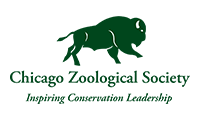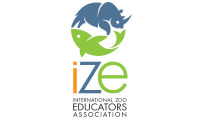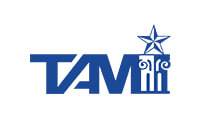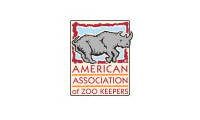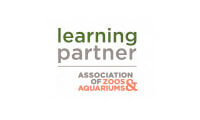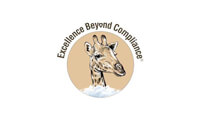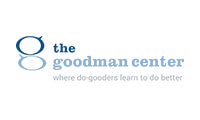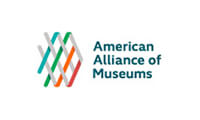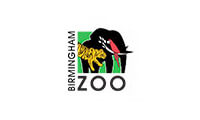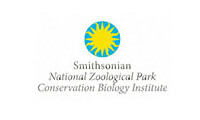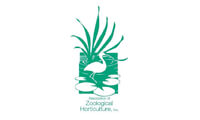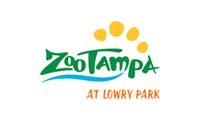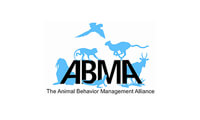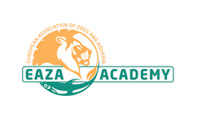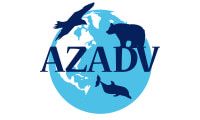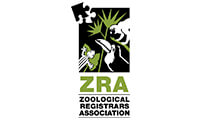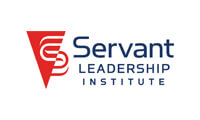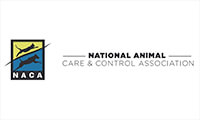Getting Better All the Time
Caregiving Is Love in Action
By James F. Gesualdi
To keep ahead, each one of us, no matter what our task, must search for new and better methods—for even that which we now do well must be done better tomorrow.
—James F. Bell
I hope your day is full of love.
—Greeting on the door to Panetta Physical Therapy & Diagnostics, Bay Shore, Long Island, New York
Love Is Ever Timely
Whether or not it is during the month when Valentine’s Day is celebrated, genuine, heartfelt, selfless messages conveying love are always something to love. Encountering “I hope your day is full of love” as a posted greeting on an early morning walk warmed my heart. As someone who just happened to notice those words on a door, they made me feel grateful, and set my mind racing.
My first thoughts turned to all the things to love that very morning—the cold, fresh air, feet, legs, heart, and lungs carrying me on my journey, and the ability to think about such things. Next up were all the sources of love often taken for granted—those closest to us, in the form of beloved family and friends. Another series of thoughts focused on the ultimate joy of loving our life’s “work.” My professional life, “lawyering from the heart,” has been created out of and through an abundance of love. Little Bit and Memphis are the two nonhuman animals most responsible for that.
Caregiving Is Loving Work
Given the location of the hopeful greeting that one’s “day is full of love” on a door to a physical therapy center, the party responsible for putting those words up where I might glance upon them was likely a caregiver. A caregiver setting forth such a kindly greeting surely is a good and thoughtful caregiver—the kind of caregiver we should all want tending to us when we need care, and the kind of caregiver we should all want to be when we are doing the caregiving.
A loving caregiver has more to give, and the recipient of that care, human or nonhuman, benefits. Even when we are not caregivers, a day full of love is perhaps the greatest gift we bring to life in ourselves, as well as our relationships and our efforts on behalf of animals. Those days make for us a truly good life. When that love is at the heart of all we do for animals, we make their lives better, and that is why we are here—for the animals and each other.
“Sometimes Love Just Ain’t Enough,” Really?
While I was writing this column, the 1982 Patty Smyth song featuring Don Henley repeatedly came to mind—so much so that it was a message that demanded inclusion. While love may be the greatest positive energy for good, it can sometimes blind or fool us into thinking that loving the animals we have dedicated our lives to helping is all we need to do with ourselves.
As good and well-intentioned as such love may be, we must act on that love and accord our animal brethren dignity, respect, and the greatest possible opportunities to live their lives as they were created to enjoy them—including Greg Vicino and Lance Miller’s “Five Opportunities to Thrive.” (See my December 2015 column, Opportunities Abound, available here.)
U.S. Animal Welfare Act (AWA) Developments Provide Additional Opportunities to Demonstrate Love in Constructive Action
The AWA does not get much love. Most often, it is strongly criticized for not going far enough to sufficiently improve, protect, and/or save animals’ lives. Sadly, sometimes, as noted in brief below, this criticism is valid. Others criticize the application of the AWA and its regulations, and the impact on them, their activities, and animals. On occasion, there have been instances where there might have been something to such criticism.
The AWA and the regulations implementing it are human-made law governing specific human activities with certain animals, in an attempt to provide humane care and treatment. As has been propounded here for years, this legal standard should be just the starting point rather than the end of our efforts on behalf of animals in the care of people, including those comprising the zoological community.
This is where love returns to the forefront of the discussion. Love and the law. Lawyering from the heart. One of the greatest loves of my professional life (and there are many, with endless gratitude for them) is creating, developing, refining, and putting into action constructive ideas to make the AWA regulations—including those as they exist right now—to greater use in advancing animals’ interests, protection and well-being. That is an activity borne of love, and a manifestation of love when good outcomes ensue.
Here are some recent and ongoing regulatory developments, and examples and ideas of love (and more) in action, on behalf of animals. Cautionary note: there is one item that will absolutely break your heart, as it did mine.
The “New” Licensing Regulation
Obtaining an entirely new AWA exhibitor’s license every three years requires full compliance, as well as special authorization to maintain certain species. While maintaining complete compliance should be everyone’s aim—every day and every inspection—things may happen, and non-compliances may be identified and written into an inspection report posted online. Most organizations address the items and move on, and note when done prior to the assigned correction date. That is acceptable. But rather than being merely “acceptable,” we must be worthy of public trust and support, and act with urgency and transparency.
Provide your inspector with a self-certified compliance report attesting to and evidencing the prompt correction and improvement of any cited items, as well as other improvements since the inspection. Ask that the agency make this available to those requesting your inspection report. If you are uncomfortable with sharing so much information, submit the self-certified compliance report indicating that date- and time-stamped photographs and documentation are available for review upon re-inspection. Make those materials available in your inspection folder and indicate them on your inspection checklist, so that you are well organized and ready. This also equips you for responding to any related concerns, criticisms, and/or media inquiries. Most importantly, it demonstrates a loving and serious commitment to animal welfare-related improvements.
The “New” Contingency Plan and Training of Personnel Regulations
Remember to continually review and update your emergency preparedness contingency plan, as well as periodic (and updated, if needed) training within the prescribed time frames. The plan and the initial training are a good place to start, but more is required under the regulation.
Though the agency has emphasized its interest in the planning process and the reality that every situation likely demands on-the-spot adjustments, the plan, training, and skillful execution can protect and can save animal and human lives (including visitors and first responders)—and that is a great act of love.
The “New” Bird Regulation (to Be Published About the Same Time as This Column, with a Later Effective Date)
Thank goodness, a great multitude and variety of bird species will finally get the love, dignity, and respect they deserve from the AWA regulations. Based upon the contents and extent of the proposed rule, the new regulation will contain comprehensive requirements similar to those for other regulated categories of species, as well as important bird-specific measures relating to things like environmental complexity and enrichment. Bird-loving caregivers will be putting their hearts into this for the foreseeable future.
The agency is likely to provide additional insights into the final regulation within the prefatory language in the Federal Register and in future guidance. Here is information on a New York State Bar Association Committee on Animals and the Law program on avian law that I will moderate next month, featuring several distinguished panelists—including a team of USDA leaders addressing the bird regulation.
When Doves Cry: A Survey of the Avian Legal Landscape
Wednesday, March 22, 2023 | 1–5 p.m. Eastern Time
4.5 MCLE credits | 4.5 PP
NYSBA member: $125
Committee member: free
Non-member: $175
Non-attorney: $50 (use code NAMP91)
This is a virtual event specifically addressing recent developments in the field of avian law, including the AWA, the Migratory Bird Treaty Act (MBTA), the Endangered Species Act (ESA), and other laws related to birds. Of particular interest, USDA panelists will discuss the expected impact that newly released AWA regulations will have on the legal status of birds; animal law advocate/attorney Bruce Wagman will discuss the ways in which the ESA impacts birds; and Lorraine Sciarra, general counsel of the National Audubon Society, will give an overview of the key provisions of the MBTA.
Register Here: https://nysba.org/events/when-doves-cry-a-survey-of-the-avian-legal-landscape/
The Pending Advance Notice of Proposed Rulemaking on Animal Handling, Staff Training, Risk-based Categories of Species, Public Contact, and Environmental Enrichment
This is big, and this is the future of the AWA regulations. Let’s briefly touch upon each of the major areas the agency is exploring.
Animal Handling
Animal handing is everything. Just refer to its definition at 9 C.F.R. § 1.1 of the AWA regulations: Handling means petting, feeding, watering, cleaning, manipulating, loading, crating, shifting, transferring, immobilizing, restraining, treating, training, working, and moving, or any similar activity with respect to any animal.
Staff Training
Staff training is referenced throughout the regulations, with very generalized requirements and/or as being in accord with professionally accepted standards. Staff training and skill impacts everything relating to the animals every day.
Categorization of Species, Based on Risk
This will help the agency, zoological organizations, staff, and others impacted by animal-related incidents manage those species, and assess and address any incidents. It may also have extended liability-related consequences.
Public Contact
The various forms of contact identified by the agency (as well as others) are intertwined with the considerations noted above, and require thoughtfully addressing our love, dignity, and respect for animals and their ability to be themselves.
Environmental Enrichment
This involves permanent, variable, physical, social, and evolving means of allowing animals to express their natural selves to the greatest extent possible.
Digging into this notice and any follow-up initiatives that come after should be a labor of love for caring and knowledgeable professionals dedicated to advancing animals’ interests, protection, and well-being.
There Ought to be a Warning: Updated Animal Welfare Inspector Guide
In a January 30, 2023 stakeholder announcement, the USDA Animal Plant and Health Inspection Service Animal Care unit announced it had updated its valuable guidance volume, the Animal Welfare Inspection Guide (available here). The announcement indicated the new version has eliminated any reference to “Teachable Moments,” a practice the agency discontinued last year, per congressional directive. Now, all noncompliant items will be included in inspection reports, which continue to be posted online.
The announcement did not indicate the other significant revision to the Guide: the addition of a substantial new Chapter 8 on the subject of confiscation of animals when they are declared to be in a state of suffering, and relief is not provided or deemed likely to be provided by the facility. Having been involved in placing confiscated animals, this provides important guidance for inspectors, and the agency repeats its caveat that this does not supersede or extend the requirements of the AWA or regulations.
Missing in the new Chapter 8, however, is a warning that the gruesome images of animal suffering it contains may cause a caring human being to become outraged and upset. The images may make clear some severe forms of suffering, and will aid in the handling of agency confiscation procedures, and defense of those procedures. Hopefully, that will accelerate getting suffering animals the help they need—but the actions leading to this level of suffering that warrants confiscation seem incomprehensible.
Love Cannot Be Blind to the Bad Situations We Must Face and Change
Difficult and unpleasant images like those in the revised Animal Welfare Inspection Guide remind us that there are places and situations where animals suffer greatly. The agency's addition of the confiscation guidance may help alleviate some of that suffering. Better yet, the agency and all stakeholders should be constructively engaged in finding ways to prevent such suffering in the first place.
The new licensing regulation may help in keeping those who are unqualified to provide adequate care from being licensed, but that alone is far from enough. Our love, compassion, and concern for animals should be focused on those under our stewardship, but we cannot stop there. True love knows no bounds, and there is much work to be done to extend positive efforts on behalf of all animals.
The purpose of human life is to serve, and to show compassion and the will to help others.
—Albert Schweitzer
© 2023 James F. Gesualdi, P.C. The opinions expressed herein are solely those of the author. This is not, nor should it be construed as, legal advice.

